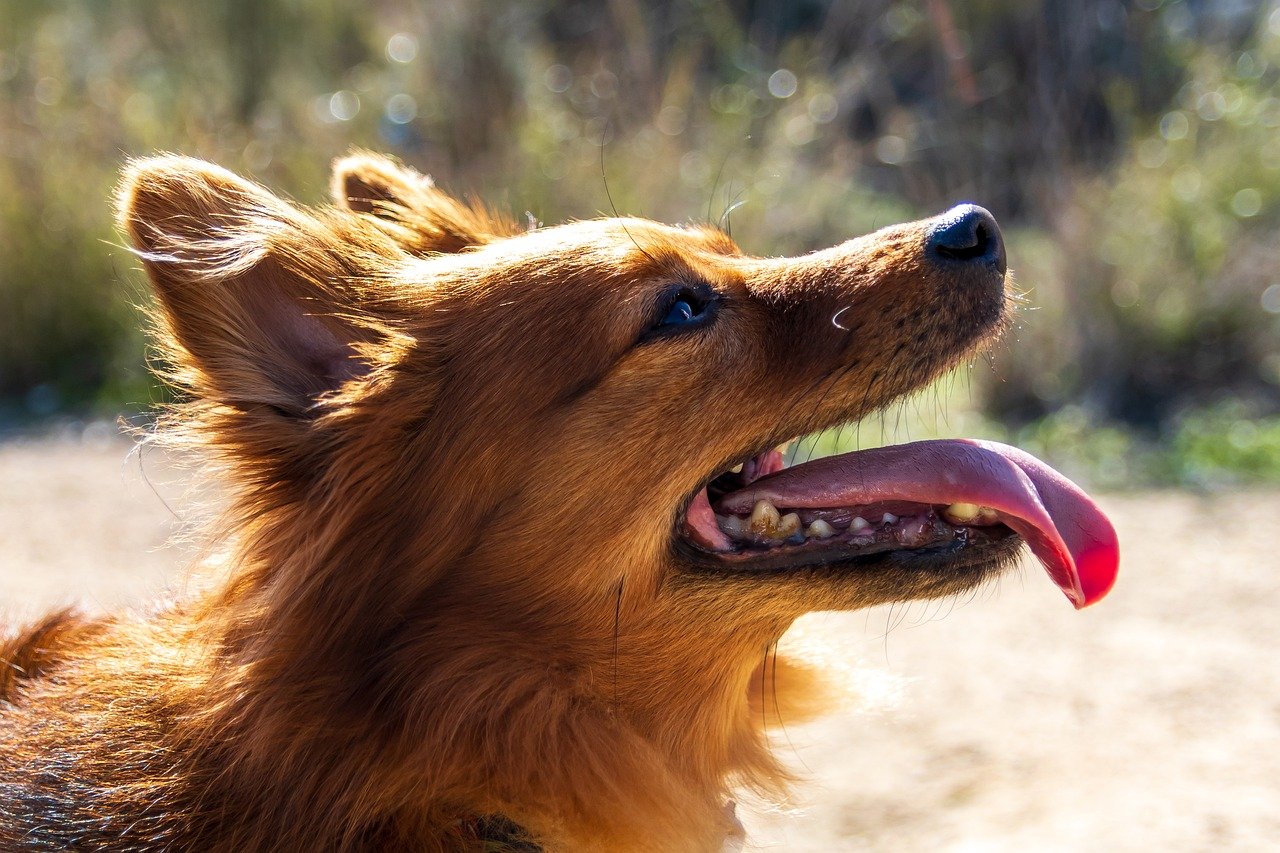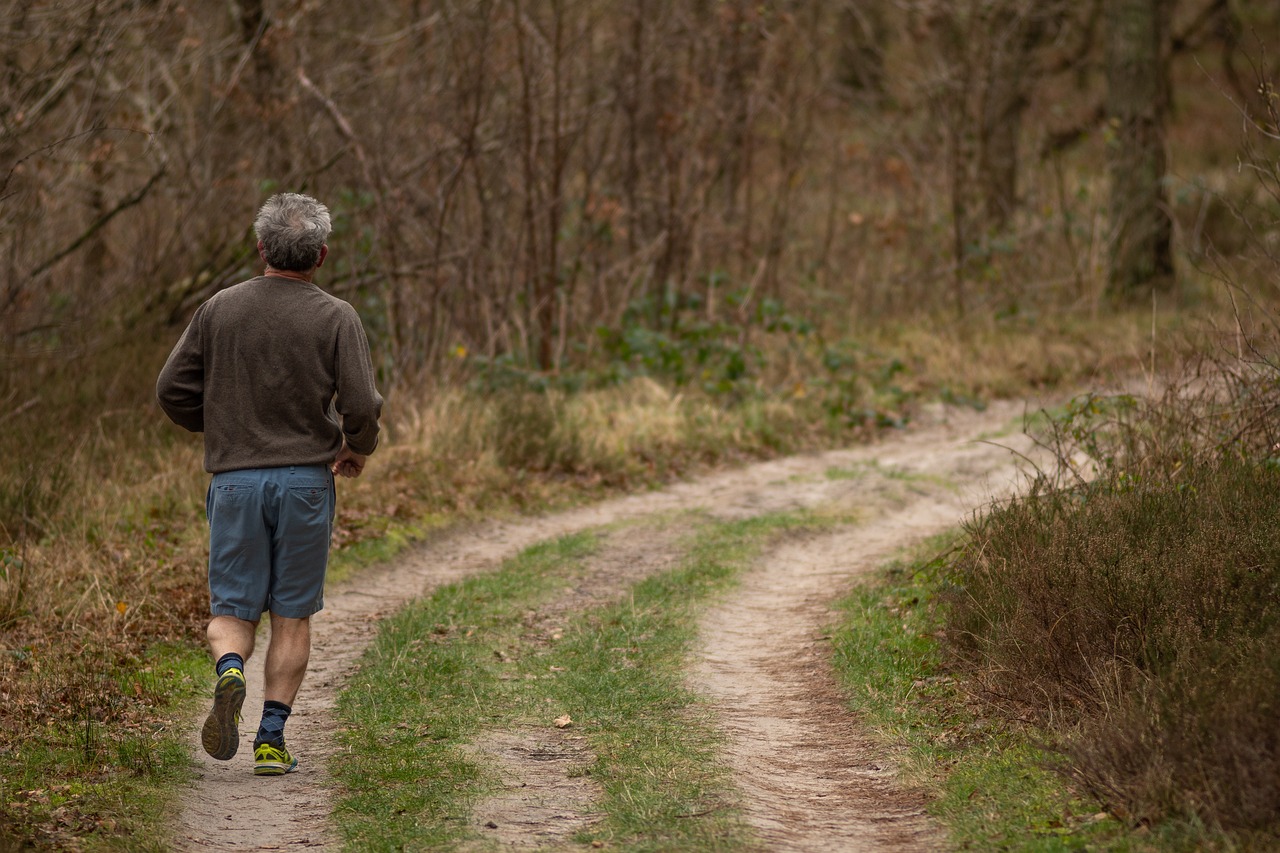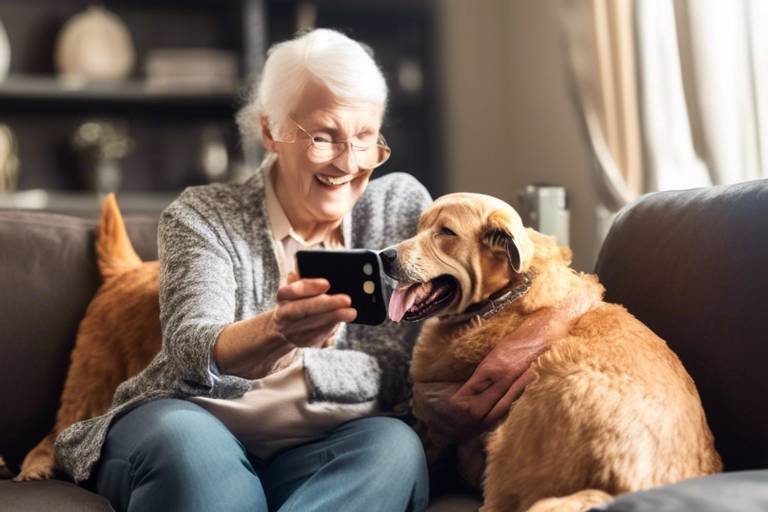Keeping Your Senior Pet Active - Fun Activities to Try
As our furry companions age, it becomes increasingly important to ensure they remain active and engaged. Just like us, senior pets can experience a decline in energy levels and mobility, but that doesn’t mean they can’t enjoy life to the fullest! Keeping your senior pet active is not just about physical exercise; it’s also about stimulating their minds and enriching their lives. This article explores various enjoyable activities that you can try with your senior pet, ensuring they stay fit, happy, and mentally sharp as they age gracefully.
As pets age, their needs change significantly. Understanding these changes is crucial for providing appropriate care and ensuring they remain happy and healthy throughout their golden years. Senior pets often face challenges such as arthritis, decreased stamina, and cognitive decline. However, with the right approach, you can help them navigate these changes. It’s essential to keep their routines consistent, provide a balanced diet, and offer plenty of love and attention. Just like a fine wine, your senior pet deserves to be cherished and appreciated more as they age!
Gentle exercise is essential for senior pets. Discover a variety of low-impact activities that promote fitness without overexerting your furry friend, ensuring they stay active and healthy. Regular, moderate exercise can help maintain their muscle mass, joint flexibility, and overall cardiovascular health. Think of it as keeping the engine of their body running smoothly! It’s important to tailor activities to their individual needs and limitations. Here are some gentle exercise options you might consider:
Short, leisurely walks can provide both physical benefits and mental stimulation for senior pets. Imagine taking a stroll with your beloved pet through a serene park, enjoying the fresh air and bonding over the sights and sounds of nature. These walks don’t have to be long; even a few minutes can make a big difference in your pet's day. Learn how to incorporate these walks into your routine effectively by setting aside time each day to explore your neighborhood or local park.
Selecting safe and comfortable walking paths is vital for senior pets. Look for routes that are flat, well-paved, and free of obstacles. Avoid busy streets or areas with too many distractions, as these can be overwhelming for your pet. You want your walks to be enjoyable and stress-free! Consider using a harness instead of a collar for added comfort and control. With the right path, your pet will eagerly look forward to their daily adventure!
Understanding the best times and frequency for walks can enhance your senior pet's experience. Early mornings or late afternoons are often ideal, as temperatures are cooler and more comfortable. Start with short walks and gradually increase the duration as your pet builds stamina. Remember to pay attention to their cues; if they seem tired or hesitant, it’s perfectly okay to cut the walk short. Establishing a routine can help your pet feel secure and excited about their daily exercise!
Interactive playtime can significantly benefit senior pets' mental health. Engaging their minds through play can help prevent cognitive decline and keep them sharp. Think of playtime as a workout for their brain! Discover various games and activities that stimulate their minds while keeping them physically active. Simple games like fetch with a soft toy or hide-and-seek can be both fun and rewarding for your senior pet.
Indoor activities can keep senior pets engaged, especially during inclement weather. It’s important to have a variety of options to ensure your pet doesn’t get bored. Explore fun and creative ideas to keep them entertained while indoors. You can set up an obstacle course using cushions and furniture, allowing your pet to navigate through it at their own pace. This not only provides physical activity but also encourages them to think critically about their movements.
Puzzle toys are excellent for mental stimulation. These toys challenge your pet to solve problems to get to the treats hidden inside. They can be a fantastic way to keep your senior pet occupied and engaged for hours. Learn how these toys work and the best options for your senior pet's cognitive engagement. Look for toys that are easy to manipulate but still provide a challenge, ensuring they stay interested without getting frustrated.
Short training sessions can be beneficial for both mental stimulation and bonding. Discover effective techniques to teach your senior pet new tricks and commands. Not only does this keep their minds active, but it also reinforces your bond with them. Use positive reinforcement techniques, such as treats and praise, to motivate your pet. Remember, it’s never too late to learn something new, and your senior pet will appreciate the attention and interaction!
Q: How much exercise does my senior pet need?
A: Generally, senior pets benefit from shorter, more frequent exercise sessions rather than long, strenuous workouts. Aim for 15-30 minutes a day, divided into shorter segments based on your pet's energy levels.
Q: Are there specific toys that are better for senior pets?
A: Yes! Look for toys that are soft, easy to grip, and provide mental stimulation. Puzzle toys and gentle chew toys are great options for keeping their minds sharp and their teeth healthy.
Q: How can I tell if my senior pet is overexerting themselves?
A: Watch for signs of fatigue such as heavy panting, reluctance to continue, or limping. If your pet seems tired, it’s best to stop the activity and allow them to rest.

Understanding Senior Pet Needs
As our beloved companions grow older, their needs evolve in ways that can surprise even the most seasoned pet owners. Just like humans, senior pets experience a variety of physical and emotional changes that require special attention. Understanding these shifts is crucial to ensuring that our furry friends remain happy and healthy during their golden years. For example, did you know that older pets may have decreased energy levels, joint stiffness, or even cognitive decline? These changes can affect their daily activities and overall quality of life.
One of the most significant changes is the decline in physical abilities. Senior pets often experience arthritis or other joint issues, making it difficult for them to engage in high-impact activities they once enjoyed. This is why it's essential to adapt their exercise routines to include gentle, low-impact activities that keep them active without causing discomfort. Think of it like transitioning from a high-energy workout to a relaxing yoga class—it's all about finding the right balance!
Moreover, senior pets tend to have different nutritional needs. Their metabolism may slow down, requiring adjustments in their diet to prevent obesity, which can exacerbate health issues. It's important to consult with your veterinarian to determine the best diet for your senior pet, focusing on high-quality ingredients that support their changing bodies. Incorporating supplements, such as omega fatty acids for joint health, can also make a significant difference.
In addition to physical changes, senior pets can experience emotional shifts. They may become more anxious or require extra comfort and companionship as they navigate their twilight years. This is where the importance of mental stimulation comes into play. Engaging your senior pet in activities that challenge their minds can help stave off cognitive decline and keep their spirits high. Activities like puzzle toys or short training sessions can provide a great outlet for their mental energy.
Understanding these needs is not just about making adjustments; it’s about creating a nurturing environment that enhances their quality of life. By paying attention to their physical, nutritional, and emotional requirements, you can ensure that your senior pet enjoys a fulfilling and active life. After all, a happy pet means a happy owner!
- What are the signs that my pet is aging? Look for decreased activity levels, changes in weight, increased sleeping, and difficulty with mobility.
- How often should I exercise my senior pet? Aim for shorter, more frequent walks rather than long, strenuous outings. Tailor the frequency to your pet's energy levels.
- Are there special diets for senior pets? Yes! Senior pets often require diets lower in calories and higher in fiber, along with specific nutrients to support their aging bodies.
- How can I keep my senior pet mentally stimulated? Engage them with puzzle toys, short training sessions, and interactive games that challenge their minds.

Gentle Exercise Options
When it comes to keeping our senior pets active, the key is to find that cater to their unique needs. As our furry companions age, their energy levels may dwindle, and their joints might not be as spry as they once were. However, this doesn't mean they should be left to lounge around all day! Instead, we can introduce a variety of low-impact activities that not only promote physical fitness but also contribute to their overall well-being. Think of these exercises as a delightful stroll through the park of life, where each step is a celebration of their golden years.
One of the most suitable forms of gentle exercise for senior pets is short walks. These walks can be as simple as a leisurely stroll around the block or a gentle meander through a nearby park. The beauty of short walks lies in their dual benefits: they provide necessary exercise while also offering mental stimulation. Imagine the joy on your pet's face as they sniff the flowers or greet familiar faces along the way! Not only does this keep them physically active, but it also allows them to engage with their environment, keeping their minds sharp.
When planning these walks, it's essential to consider the timing and frequency. Early mornings or late evenings can be ideal for avoiding the heat of the day, especially for breeds that are more sensitive to temperature changes. Aim for a routine that feels comfortable for your pet; perhaps a couple of short walks each day will keep their spirits high and their bodies moving. Just remember, it’s all about quality over quantity. A short 10 to 15-minute walk at a leisurely pace can be more beneficial than a long, exhausting trek.
Another fantastic way to keep your senior pet engaged is through interactive playtime. This doesn’t have to be a high-energy game of fetch; rather, think of activities that stimulate their minds while keeping their bodies moving. Consider gentle tug-of-war games with a soft toy or a slow-paced game of hide-and-seek where you hide treats around the house for them to find. These activities not only provide physical exercise but also encourage mental engagement, keeping your pet alert and happy.
As you explore various gentle exercise options, it’s crucial to listen to your pet’s body. Every pet is unique, and what works for one may not work for another. Always monitor their behavior during activities; if they seem fatigued or disinterested, it may be time to slow down or switch to a different activity. By being attentive to their needs, you can create a nurturing environment where they feel cherished and active.
In summary, keeping our senior pets active doesn’t require intense workouts or rigorous routines. Instead, it’s about finding those that fit seamlessly into their lifestyle. Whether it’s short walks, interactive play, or simply enjoying the sights and sounds of their surroundings, the goal is to keep them engaged and happy as they age gracefully. Remember, a happy pet is a healthy pet!
Short Walks
Short, leisurely walks can be a delightful way to keep your senior pet engaged while providing them with the much-needed exercise they require. As our furry friends age, their energy levels may decrease, but this doesn't mean they should miss out on the joys of exploring the great outdoors. In fact, these walks not only promote physical fitness but also serve as an excellent opportunity for mental stimulation. Imagine the joy on your pet's face as they sniff around new scents, observe their surroundings, and interact with the world around them. It’s like taking them on a mini-adventure every day!
When planning these short walks, it's essential to consider the pace and duration. You don't want to overexert your pet, especially if they have mobility issues or health concerns. A good rule of thumb is to aim for walks that last anywhere from 10 to 20 minutes, depending on your pet's stamina. Start slow, and let your pet set the pace. If they seem to tire, it’s perfectly fine to take a break or head back home. After all, the goal is to make these walks enjoyable rather than a chore.
To make the most of your short walks, think about incorporating different routes to keep things fresh and exciting. You can explore local parks, quiet neighborhoods, or even nature trails that are easy on their joints. Here are a few tips to enhance your walking experience:
- Choose Soft Surfaces: Whenever possible, opt for grassy or dirt paths instead of concrete. These surfaces are easier on your pet's joints.
- Bring Water: Keep a portable water bottle handy to ensure your pet stays hydrated, especially on warmer days.
- Use a Comfortable Leash: A harness can provide better support and comfort for senior pets, reducing strain on their necks.
Remember, the key to successful short walks is consistency. Try to establish a routine that works for both you and your pet. Perhaps a stroll in the morning before the heat of the day or a gentle evening walk when the sun sets could be ideal. Not only will this keep your senior pet physically active, but it will also strengthen the bond between you two. Just like humans, pets thrive on routine and familiarity, so they’ll look forward to these daily adventures!
In conclusion, short walks are a fantastic way to keep your senior pet active and engaged. They offer a blend of exercise, exploration, and quality time that contributes significantly to your pet's overall well-being. So, grab that leash and step outside; your furry friend is waiting for their next adventure!
Q: How often should I take my senior pet for short walks?
A: Ideally, aim for daily walks. However, the frequency can vary based on your pet's health and energy levels. Start with a few short walks a week and adjust as needed.
Q: What if my senior pet seems tired after a short walk?
A: It's completely normal for senior pets to tire more quickly. Listen to their cues and allow for breaks or shorten the walks if necessary.
Q: Are there specific breeds that need more exercise as seniors?
A: Yes, some breeds, especially larger or more active ones, may require more exercise than others. Always consult your veterinarian for tailored advice based on your pet's breed and health.
Q: Can short walks help with my pet's weight management?
A: Absolutely! Regular short walks can help maintain a healthy weight and prevent obesity, which is crucial for senior pets.
Choosing the Right Path
When it comes to keeping your senior pet active, one of the most important aspects is selecting the right walking path. You wouldn't want to take your elderly furry friend on a rocky trail or a busy road, right? Just like we prefer smooth, safe paths as we age, our pets do too! The ideal walking route should be comfortable and safe, allowing your pet to enjoy their time outdoors without unnecessary stress or risk of injury.
First and foremost, consider the surface of the path. Soft surfaces like grass or dirt are much kinder to aging joints than hard pavement. Think of it this way: would you prefer walking on a soft, cushy carpet or a cold, hard floor? Your pet would likely choose the same! Additionally, avoid areas with steep inclines or declines, as these can put extra strain on their legs and back. Instead, look for flat, even ground that allows for a leisurely stroll.
Another key factor is the environment. Choose paths that are away from heavy traffic and loud noises, as these can be overwhelming for senior pets. A quiet park or a nature trail can provide a peaceful ambiance, allowing your pet to soak in the sights and sounds without feeling anxious. Plus, the fresh air and gentle breeze can be invigorating! To help you visualize, here’s a quick comparison of different walking environments:
| Environment | Pros | Cons |
|---|---|---|
| Busy Streets | Convenient | Stressful, noisy, potential hazards |
| Parks | Quiet, natural surroundings | Can be crowded at times |
| Nature Trails | Beautiful scenery, peaceful | May have uneven terrain |
Lastly, don't forget to take into account your pet's preferences. Some pets enjoy the company of other animals and might prefer a dog park, while others may feel more comfortable in a secluded area. Pay attention to their reactions during walks; if they seem anxious or hesitant, it may be time to switch up the route. After all, a happy pet is an active pet!
In summary, choosing the right path for your senior pet is all about ensuring their comfort and safety. By considering the surface, environment, and your pet's individual preferences, you can create a delightful walking experience that keeps them engaged and active. Remember, the goal is to make these walks enjoyable, so both you and your furry friend can bond while basking in the joy of movement.
Timing and Frequency
When it comes to keeping your senior pet active, understanding the timing and frequency of their exercise is absolutely essential. Just like us, our furry companions have different energy levels throughout the day, and recognizing these patterns can help you tailor their activity schedule to fit their needs. A well-timed walk or play session can make all the difference in their mood and overall health.
Generally, senior pets benefit from shorter, more frequent exercise sessions rather than long, strenuous activities. Aim for two to three short walks each day, ideally lasting about 10 to 20 minutes each. This not only prevents overexertion but also keeps their joints and muscles limber. Think of it like a gentle stroll through a beautiful garden rather than a marathon race. Your pet will appreciate the leisurely pace!
To determine the best times for these walks, observe your pet's behavior. Do they seem more energetic in the morning, or are they more lively in the evening? You might find that they enjoy a morning jaunt to kickstart their day, followed by a relaxed evening stroll to unwind. It’s all about finding that sweet spot where they feel excited yet comfortable.
Here are some tips to help you establish a routine:
- Consistency is Key: Try to walk your pet at the same times each day. This creates a predictable routine that can help reduce anxiety and increase their eagerness for exercise.
- Watch the Weather: Be mindful of temperature extremes. Early mornings or late evenings are often the best times for walks, especially during hot summer months.
- Listen to Their Cues: Pay attention to your pet's energy levels. If they seem tired or reluctant, it may be a sign to cut the walk short or take a break.
In addition to walks, consider incorporating other gentle activities into your routine. For instance, a quick game of fetch in the backyard can be a delightful way to keep them engaged without overdoing it. Remember, the goal is to keep your senior pet active while ensuring they enjoy every moment. After all, an active pet is a happy pet!
Interactive Playtime
When it comes to keeping your senior pet engaged, is a game changer! Just like humans, our furry friends thrive on mental stimulation and social interaction. Think of it as a fun workout for their brains, helping to keep their minds sharp as they age. You might be wondering, "What kind of activities can I do with my senior pet?" Well, let’s dive into some delightful options that will not only entertain but also strengthen your bond.
First off, consider incorporating simple fetch games. While your senior dog might not be able to sprint like they used to, a gentle game of fetch can still be a fantastic way to keep them moving. Use a soft toy that’s easy for them to carry and encourage them to bring it back to you. This not only gives them a bit of exercise but also keeps their mind active as they focus on the task. Remember, the key is to keep it light and fun—no pressure!
Another engaging option is hide and seek. This classic game isn’t just for kids! You can hide somewhere in your home and call your pet to come find you. Not only does this provide a physical challenge, but it also stimulates their sense of smell and encourages them to think. If your pet has mobility issues, you can hide their favorite toy or treat instead, allowing them to sniff it out. It’s like a treasure hunt that keeps their spirits high!
Don’t forget about interactive toys! These are specially designed to challenge your pet mentally. Puzzle toys that dispense treats can keep your senior pet occupied for hours. As they nudge, paw, and figure out how to get to the goodies inside, they’re exercising their brains and having a blast. It’s a win-win situation! You can find a variety of these toys at your local pet store or online, catering to different skill levels and preferences.
To make it even more exciting, consider setting up a small obstacle course in your living room or backyard. Use cushions, tunnels, or even boxes to create a safe space for your pet to navigate. This not only gives them a chance to exercise but also challenges them mentally as they figure out how to maneuver through the course. Just be sure to keep the course simple and safe, adjusting it to your pet’s mobility level.
In addition to these activities, it’s essential to keep an eye on your pet’s energy levels. Every pet is different, and some may tire more quickly than others. Always watch for signs of fatigue, and don’t hesitate to take breaks when needed. After all, the goal is to have fun together, not to exhaust your beloved companion!
Finally, remember that the most important part of interactive playtime is the bonding experience. Spend time with your pet, show them love, and enjoy the moments you share. Whether it’s a gentle game of fetch or a challenging puzzle toy, your senior pet will appreciate the effort you put into keeping them active and engaged. So grab a toy, get down on their level, and let the fun begin!
- How much playtime does my senior pet need? It depends on your pet's health and energy levels, but aim for about 15-30 minutes of interactive play each day, divided into shorter sessions.
- Can I play fetch with my older pet? Yes, but keep it gentle. Use soft toys and ensure the play area is safe to prevent injuries.
- Are there any toys I should avoid for senior pets? Avoid small toys that could be a choking hazard and opt for softer, larger toys that are easier for them to handle.

Creative Indoor Activities
When the weather outside is less than inviting, it doesn’t mean your senior pet has to miss out on fun and engaging activities. In fact, indoor time can be a fantastic opportunity to bond with your furry friend while keeping them mentally and physically stimulated. Think of it as a cozy retreat where you can both enjoy some quality time together, just like curling up with a good book on a rainy day. So, what are some creative indoor activities that can keep your senior pet entertained? Let’s dive into some exciting options!
One of the most effective ways to engage your senior pet's mind is through puzzle toys. These toys are designed to challenge your pet's cognitive abilities while providing a rewarding experience. Imagine your pet solving a little mystery every time they play! Puzzle toys come in various forms, from treat-dispensing balls to complex interactive games. They encourage your pet to think critically and can keep them occupied for hours. Just be sure to choose toys that are appropriate for your pet’s size and skill level. A small table below outlines some popular options:
| Puzzle Toy | Benefits | Recommended For |
|---|---|---|
| KONG Classic | Durable, can be filled with treats | All sizes |
| Outward Hound Hide-A-Squirrel | Encourages problem-solving | Medium to large dogs |
| PetSafe Busy Buddy | Variety of challenges | All sizes |
Another wonderful way to keep your senior pet engaged is through short training sessions. You might be surprised to learn that your older pet can still learn new tricks! Training is not only a great way to stimulate their mind but also strengthens your bond. Start with simple commands like “sit,” “stay,” or even “shake.” Keep the sessions light-hearted and fun, and don’t forget to reward them with treats or praise. This is akin to a workout for their brain, helping to keep their cognitive functions sharp. Plus, who doesn’t love the joy of seeing their pet learn something new?
Lastly, consider setting up a mini obstacle course in your living room. You can use cushions, chairs, and blankets to create a safe and fun environment for your pet to navigate. This not only provides physical exercise but also encourages your pet to explore and engage with their surroundings. It’s like an adventure in your own home! Just make sure the course is easy enough for your senior pet to manage without risking injury. You can even join in on the fun, guiding them through the course and celebrating their achievements!
As you can see, keeping your senior pet active indoors can be a delightful experience for both of you. By incorporating puzzle toys, training sessions, and creative play, you can ensure that your furry friend remains engaged and happy, no matter the weather. Remember, the key is to keep things light and enjoyable. After all, who wouldn’t want to turn a dreary day into a fun-filled adventure?
Q: How often should I engage my senior pet in indoor activities?
A: Aim for short sessions of 10-15 minutes a few times a day to keep their mind and body active without overwhelming them.
Q: Are there any specific toys that are better for senior pets?
A: Yes, look for soft toys that are easy to grip and manipulate. Puzzle toys that dispense treats are also great for mental stimulation.
Q: What if my senior pet has mobility issues?
A: Adjust activities to suit their abilities. Gentle stretching, light training, and interactive games that don’t require much movement can be beneficial.
Q: Can indoor activities replace outdoor exercise?
A: While indoor activities are fantastic, they should complement outdoor exercise when possible. Short walks and fresh air are still essential for your pet's overall well-being.
Puzzle Toys
Puzzle toys are not just a passing trend; they are a fantastic tool for keeping your senior pet mentally stimulated while providing them with a fun challenge. As our furry friends age, their cognitive abilities may decline, similar to how humans experience memory lapses. However, engaging their minds through interactive toys can help slow down this process. Imagine a puzzle toy as a brain workout for your pet—just like we enjoy solving crosswords or Sudoku, our pets can benefit from these stimulating activities too!
These toys often come in various forms, such as treat-dispensing balls, sliding puzzles, or even interactive mats. The goal is to encourage your pet to think critically and problem-solve to access a hidden treat. This not only keeps them occupied but also enhances their natural instincts and curiosity. When selecting a puzzle toy, consider your pet's physical abilities and preferences. Some may enjoy toys that require them to nudge or roll, while others might prefer ones they can manipulate with their paws or snouts.
Here are some popular types of puzzle toys you might consider:
- Treat-Dispensing Balls: These toys release treats as your pet rolls them around, combining play with a tasty reward.
- Sliding Puzzle Boards: These require your pet to slide pieces around to uncover hidden treats, promoting dexterity and problem-solving skills.
- Snuffle Mats: These mats mimic grass and allow you to hide treats within the fabric, encouraging your pet to sniff and forage.
When introducing a puzzle toy to your senior pet, be patient. They may need some time to figure it out, especially if they are not used to such activities. Start with easier puzzles and gradually increase the difficulty as they become more comfortable. This approach not only keeps them engaged but also boosts their confidence as they succeed in solving the puzzles.
Moreover, puzzle toys can serve as a bonding experience between you and your pet. Spend time together, guiding them through the challenges, and celebrate their successes with praise and affection. This interaction not only strengthens your relationship but also encourages your pet to stay active and engaged, making their golden years truly enjoyable.
Q: How often should I use puzzle toys with my senior pet?
A: It's best to incorporate puzzle toys into your pet's routine several times a week. Start with short sessions of about 10-15 minutes and gradually increase the duration as they become more engaged.
Q: Are there any specific puzzle toys recommended for senior pets?
A: Yes! Look for puzzle toys designed for older pets, which often feature softer materials and easier mechanics. Brands like Nina Ottosson and Outward Hound offer excellent options tailored for senior pets.
Q: Can puzzle toys help with anxiety in senior pets?
A: Absolutely! Engaging your pet's mind can reduce anxiety by providing a distraction and a sense of accomplishment. This can be particularly beneficial during stressful times, like thunderstorms or when you're away from home.
Training Sessions
Training sessions are not just for puppies; they can be a delightful and rewarding experience for senior pets too! Engaging your older furry friend in short, fun training sessions can significantly enhance their mental stimulation while also strengthening the bond you share. Think of it as a mental workout—just like humans, pets benefit from keeping their minds active. Imagine your senior dog, once a sprightly pup, now learning new tricks or commands; it’s a fantastic way to keep their spirits high and their minds sharp!
When planning training sessions for your senior pet, keep in mind that their attention span may not be what it used to be. Therefore, short and sweet sessions are key. Aim for about 5 to 10 minutes, and always follow up with plenty of praise and rewards. Positive reinforcement is crucial; it not only encourages your pet to learn but also keeps the experience enjoyable. You might find that using their favorite treats as rewards can make a world of difference. This is not just about teaching commands; it’s about creating joyful moments together.
Here are some effective techniques to consider when conducting training sessions with your senior pet:
- Use Clear Commands: Simple, one-word commands are easier for older pets to understand. Words like "sit," "stay," or "come" can be very effective.
- Be Patient: Understand that your senior pet may take longer to learn new tricks. Patience is key, and a calm demeanor will help them feel comfortable.
- Incorporate Their Interests: If your pet loves to cuddle, teach them to "give a hug." If they enjoy fetching, teach them to "drop it." Tailoring sessions to their interests will keep them engaged.
Moreover, training sessions can also be a great opportunity to reinforce good behavior. For instance, if your pet tends to bark excessively, you can teach them to "quiet" on command. This not only helps in managing their behavior but also gives them a sense of accomplishment when they master new skills. It’s like giving them a little trophy for their efforts!
Remember, the key to successful training sessions is consistency. Try to incorporate these sessions into your daily routine. Whether it’s a quick morning refresher or an evening wind-down, regular practice will help solidify their learning. Plus, it gives you both something to look forward to each day!
In conclusion, training sessions for senior pets are a wonderful way to keep their minds active and enhance your bond. So grab some treats, find a cozy spot, and start teaching your beloved companion some new tricks. You might be surprised at how much joy and excitement this brings into both your lives!
Q: How long should training sessions last for senior pets?
A: Aim for 5 to 10 minutes per session, keeping it short and enjoyable to maintain their attention.
Q: What types of commands are best for senior pets?
A: Simple, one-word commands like "sit," "stay," and "come" are effective and easy for them to grasp.
Q: How can I keep my senior pet motivated during training?
A: Use their favorite treats as rewards and ensure to praise them frequently to keep the experience positive and engaging.
Q: Can training sessions help with behavioral issues in senior pets?
A: Yes! Training can reinforce good behavior and help manage issues like excessive barking or jumping.
Frequently Asked Questions
- What are some signs that my senior pet needs more exercise?
As pets age, they may become less active, but if you notice your furry friend gaining weight, having difficulty getting up, or showing signs of boredom, it could mean they need more exercise. Look for changes in behavior, like increased restlessness or seeking attention, which can indicate they want to play or go for a walk.
- How often should I take my senior pet for walks?
Short, gentle walks are ideal for senior pets, and frequency can vary based on their energy levels. Generally, aim for 2 to 3 short walks a day, around 10 to 15 minutes each. Pay attention to your pet's cues and adjust the frequency based on their comfort and stamina.
- Are there specific toys that are best for senior pets?
Absolutely! Look for puzzle toys that challenge their minds without being too difficult. Soft, plush toys are great for gentle play, while treat-dispensing toys can keep them engaged and motivated. Always ensure the toys are safe and appropriate for their age and size.
- Can training sessions benefit my senior pet?
Yes! Short training sessions can provide excellent mental stimulation and strengthen your bond. Focus on simple commands or tricks that your pet enjoys. Keep sessions brief and positive, using treats or praise to encourage them.
- What should I consider when choosing walking paths for my senior pet?
When selecting walking paths, look for flat, even surfaces to avoid strain on their joints. Choose routes with minimal distractions and noise to keep them calm. Also, consider shaded areas for warm days and avoid busy streets to ensure a safe and pleasant experience.
- How can I tell if my pet is enjoying the activities?
Watch for signs of enthusiasm, like wagging tails, playful behavior, or eager participation. If your pet seems relaxed and engaged, they're likely enjoying the activities. However, if they show signs of fatigue or disinterest, it might be time to switch things up or take a break.



















